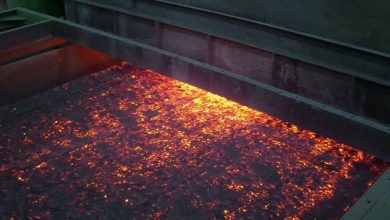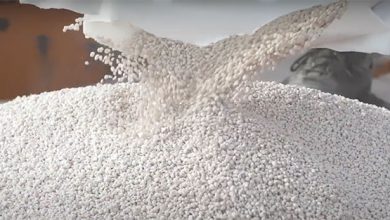In briquetting, the binder is often the unsung hero. Whether you’re compacting coal fines, charcoal dust, biomass, or steel plant residues, it’s the binder that makes it all possible—holding particles together, improving strength, and influencing burn behavior.
This article explores the world of briquette binders—from classification and chemical behavior to practical usage and industry considerations. Whether you’re developing briquettes for household fuel or industrial metallurgy, choosing the right binder is one of the most important decisions you’ll make.

What Is a Briquette Binder?
A briquette binder is an additive that allows fine powders—charcoal, coal, biomass, or mineral fines—to stick together under pressure and form a stable, solid briquette. Without a binder, most dry particulate materials cannot be shaped or retained.
Binders are essential not only for shaping but also for:
-
Improving durability during transport and handling
-
Controlling burn rate and ash content in some cases
-
Enhancing water resistance for outdoor storage by choosing some special type binders
-
Reducing fines loss and dust generation
Binders can be classified in several ways: by mechanism, composition, or application behavior.

Five Functional Types of Binders
Based on widely accepted industrial research and practical experience, binders can be grouped into five functional types:
1. Inactive Film Binders
These are liquids or solids that form a physical film around the particles and bond them through surface tension or adhesion.
-
Examples: Water, alcohol, starch, molasses, gum arabic, flour
-
Notes: Typically cheap and easy to use; limited water resistance
2. Chemical Film Binders
These coat the particles and cause a short chemical reaction, forming a thin bond. They are commonly used where some waterproofing is required.
-
Examples: Sodium silicate, sodium silicate + lime, dilute acid
-
Notes: Good for coal and mineral briquettes exposed to moisture
3. Inactive Matrix Binders
These form a rigid framework or matrix, physically surrounding and holding particles together after cooling or solidifying.
-
Examples: Tar, asphalt, paraffin, wax, metal stearates
-
Notes: Often require heating; suited to high-temp metallurgical applications
4. Chemical Matrix Binders
Two or more components react chemically to bind the briquette internally. Used when strength and water resistance are both required.
-
Examples:
-
Lime (CaO) + water
-
Molasses + slaked lime
-
Cement + water
-
-
Notes: Common in industrial and metallurgical applications
5. Chemical Reaction Binders
The binder reacts directly with the feedstock to form solid bridges. Ideal for waste-to-energy and steel waste briquetting.
-
Examples:
-
Furnace dust + lime + water
-
Fly ash + sulfuric or phosphoric acid
-
-
Notes: Requires precise handling and dosing
Popular Binder Materials and Their Roles
Different binders serve different needs depending on cost, availability, process setup, and product goals. Here’s a closer look at commonly used substances:
Starch
-
Type: Inactive film binder
-
Use: BBQ charcoal, biomass briquettes
-
Pros: Clean burning, safe, widely available (cassava, corn, potato)
-
Cons: Must be cooked (gelatinized) in water; relatively expensive in bulk use
Molasses + Lime
-
Type: Chemical matrix
-
Use: Coal, charcoal, and steel dust
-
Pros: Inexpensive, strong bonding, moderately water-resistant
-
Cons: Requires mixing and curing; high viscosity
Cement
-
Type: Chemical matrix
-
Use: Mineral briquettes, coal fines
-
Pros: Strong, durable, accessible
-
Cons: Adds ash; reduces calorific value; not ideal for clean fuel
Sodium Silicate
-
Type: Chemical film binder
-
Use: Waterproof industrial briquettes
-
Pros: Excellent durability; fast curing
-
Cons: Brittle if overdosed; more expensive
Clay or Kaolin
-
Type: Filler + partial binder
-
Use: Budget fuel briquettes
-
Pros: Readily available, cheap
-
Cons: High ash content; weak mechanical strength
Gum Arabic
-
Type: Inactive film
-
Use: Specialty fuels
-
Pros: Natural, strong binder
-
Cons: Expensive; limited availability outside specific regions
How to Choose the Right Binder?
When selecting a binder, consider these factors:
-
Material compatibility: Is it for coal, charcoal, biomass, or mineral fines?
-
End-use requirements: Fuel grade, water resistance, mechanical strength?
-
Cost & availability: Can it be sourced locally at scale?
-
Process adaptability: Does it need cooking, heating, or curing?
-
Environmental impact: Clean burning? Non-toxic?
For example, a barbecue charcoal briquette targeting premium markets may justify higher binder costs (e.g., pregelatinized starch or sodium nitrate). But for developing economies or industrial fuel briquettes, cost-effectiveness and durability may take priority over aesthetics or low ash.
Special Binder Solutions by MAXTON
While traditional binders serve most general applications, specialized briquetting often requires more advanced solutions. MAXTON offers a range of proprietary binder systems tailored to high-performance or challenging conditions.
If your project requires more than a standard binder, MAXTON’s solutions are built to meet industrial challenges head-on.





